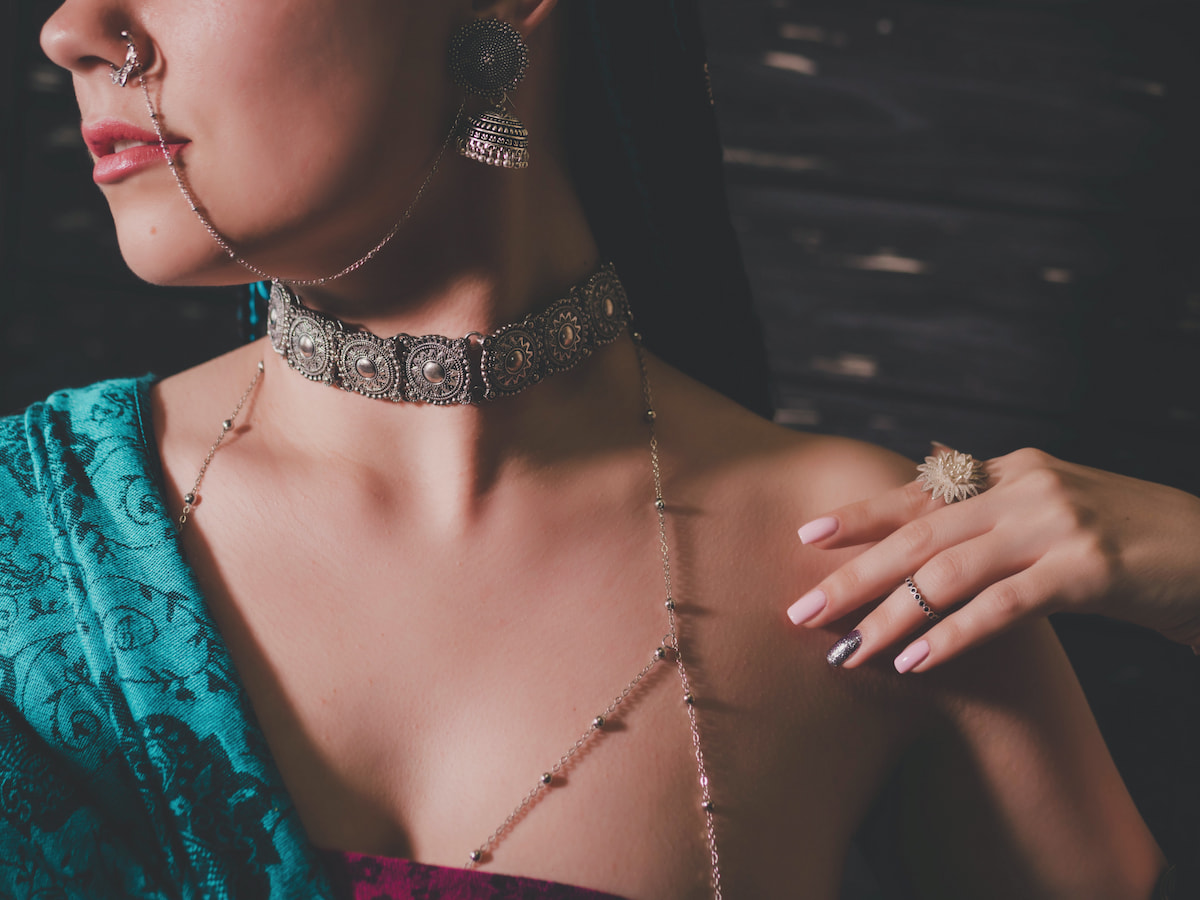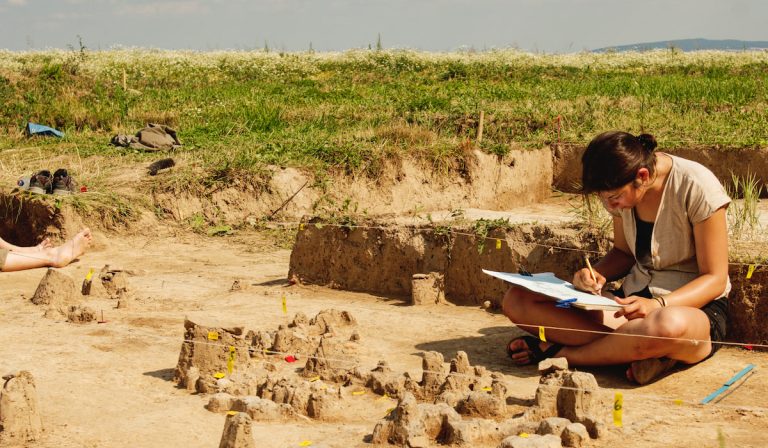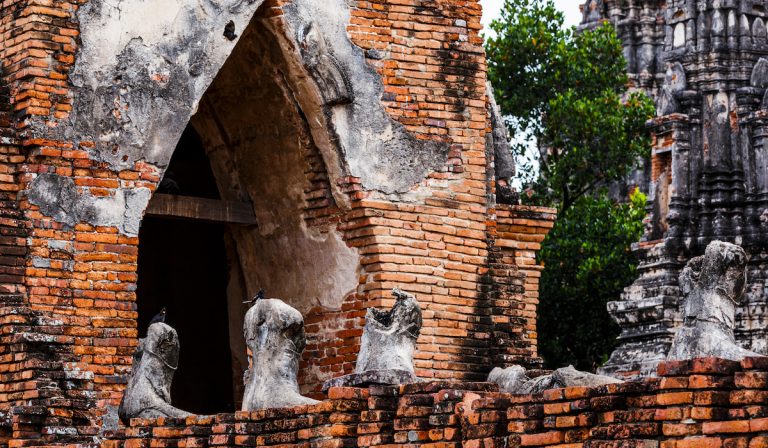Indian Jewelry History Explained
Since the early age of human civilization, jewelry has been a part of cultural identity for every ethnic group worldwide. During prehistoric eras, jewelry was made from different natural sources such as stones, feathers, shells, woods, and even bones. When metal was discovered, the creation of jewelry evolved. Then, after more metalworking techniques became a known skill, jewelry design became more complicated and sophisticated.
One of the biggest suppliers of gemstones in the world is India. In fact, this country has attracted many jewelry merchants from all over the world for 2,000 years. From Kashmir sapphires to Golconda diamonds, the Indian civilization has a long history of jewelry making that many aren’t aware of.
So, in this article, we will explain the history of Indian jewelry and how it has made its way into today’s world. First and foremost, we will look at the origin of Indian jewelry in its own civilization.
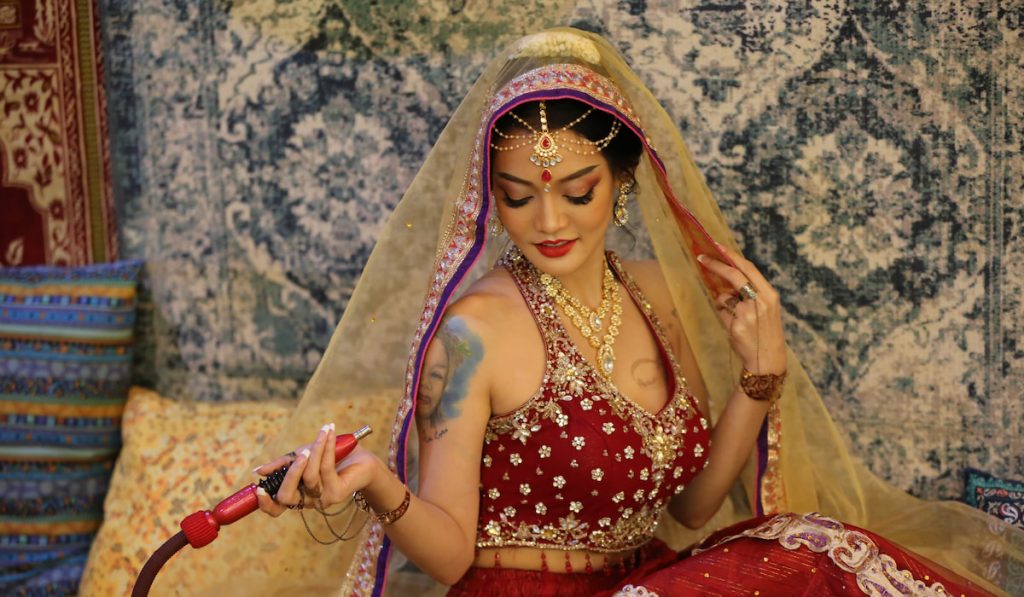
The Origin of Indian Jewelry
The history of Indian jewelry can be traced back 5,000 to 7,000 years. It all started during the epic era of Ramayana and Mahabharata when jewelry was worn as the symbol of beauty.
Most of these pieces were made from crystals, stones, pebbles, shells, animal skins, and strings. These materials were strung together in a basic design. At that time, decorative pieces and jewelry weren’t restricted to just women. Men also wore jewelry to signify power, status, societal rank, and simply for recognition.
As civilization moved forward to the period of Indus Valley, the Harappan society began to develop aesthetic sense and created more jewelry with sophisticated and unique design language. This is also because engineering skills and metalwork had evolved and were learned as specialized skills by certain people.
If you’re looking for any historical evidence that proves how jewelry design in Indian civilization has evolved, head over to the jewelry gallery of the National Museum in Delhi. There, you can find a necklace discovered in Mohenjodaro that is now being displayed for public view.
In the 16th century, the Mughal emperors expanded their power, leading to the start of the Golden Age of Indian jewelry. As they conquered more regions in Central Asia, the Mughals shared their knowledge of gem-setting in the pursuit of power and social status.
The Mughals were determined to flaunt their wealth and power to the people under their rule through jewelry and the acquisition of precious gems and metals. In fact, their obsession was so extreme to the extent that Sumptuary Laws were enforced to denote that jewelry-wearing was limited to the ruling classes. This act was enough to put the significance of jewelry in Indian society.
During this period, jewelry was also made in the form of miniature deities. Some of these replicas of gods and goddesses were set with gemstones to increase their aesthetics and value. Furthermore, Maharajahs looked at this jewelry as a bridge that could bring their relationship with the deities closer.
For instance, the amulet set with nine different precious gemstones known as the navaratna symbolizes the nine celestial Hindu gods. These gemstone settings are believed to carry mystical powers related to mythology, astrology, and Indian religions, including Hinduism, Jainism, and Buddhism.
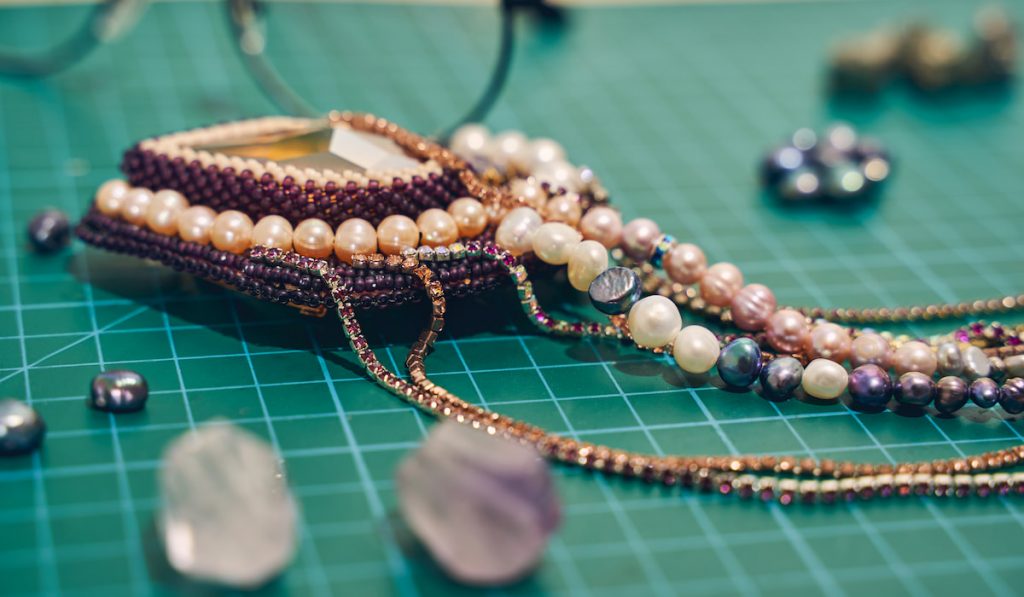
The Use of Gold and Diamond in Indian Jewellery
In 1,500 B.C., during the glory era of the Indus Valley civilization, gold was used primarily to make different types of jewelry, including necklaces, earrings, bracelets, head ornaments, rings, girdles, brooches, and many more. As Indian civilization progressed and practiced more gem-setting techniques, the demand for precious stones rose in proportion to the rise of more sophisticated jewelry.
What’s more interesting was that India was the first country to mine diamonds. The diamond mine was located on the banks of the Godavari River in Hyderabad. Even in Hindu cultures, they believed that diamonds were created when the god Shiva struck rocks with lighting to produce the shiny gems as a symbol of his lover’s beauty, Radha. Until the 19th century, many wealthy Indian people still believed in the practice of rubbing diamond powder on their teeth to avoid lightning while curing tooth decay.
During the late 19th to the early 20th century, the design language for most Indian jewelry started to change due to the influence of the European market. This can be recognized by the emergence of jewelry powerhouses such as Cartier, Chaumet, Mellerio, and Van Cleep & Arpels, which began to produce expensive accessories for Indian royalties. In fact, they started to fuse many South Indian motifs of flowers with French design to create more sophisticated jewelry.
Types Of Indian Jewelry
In Indian society, jewelry plays a big role in their culture, family status, and personal recognition. Worn on many occasions, you can find that these adornments come in different shapes or forms. Here are some of the beautiful Indian jewelry pieces that would undoubtedly catch your attention:
Polki Jewelry
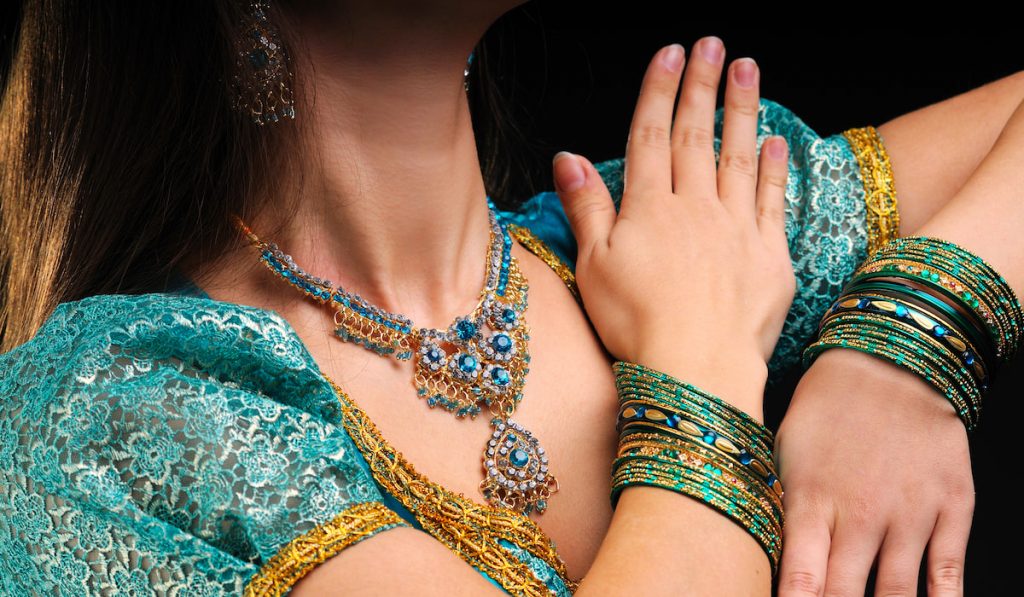
Polki jewelry is one of the famous bridal accessories. It is made from natural, uncut diamond without artificial modification or enhancement. This jewelry is sold at around four lakhs (approximately $6,000).
Due to being quite expensive, polka jewelry is usually passed down from generation to generation and is considered a wealth symbol by families that own it. Aside from uncut diamonds, this jewelry is paired with gold and other precious gemstones that increase its design and market value.
Kundan Jewellery
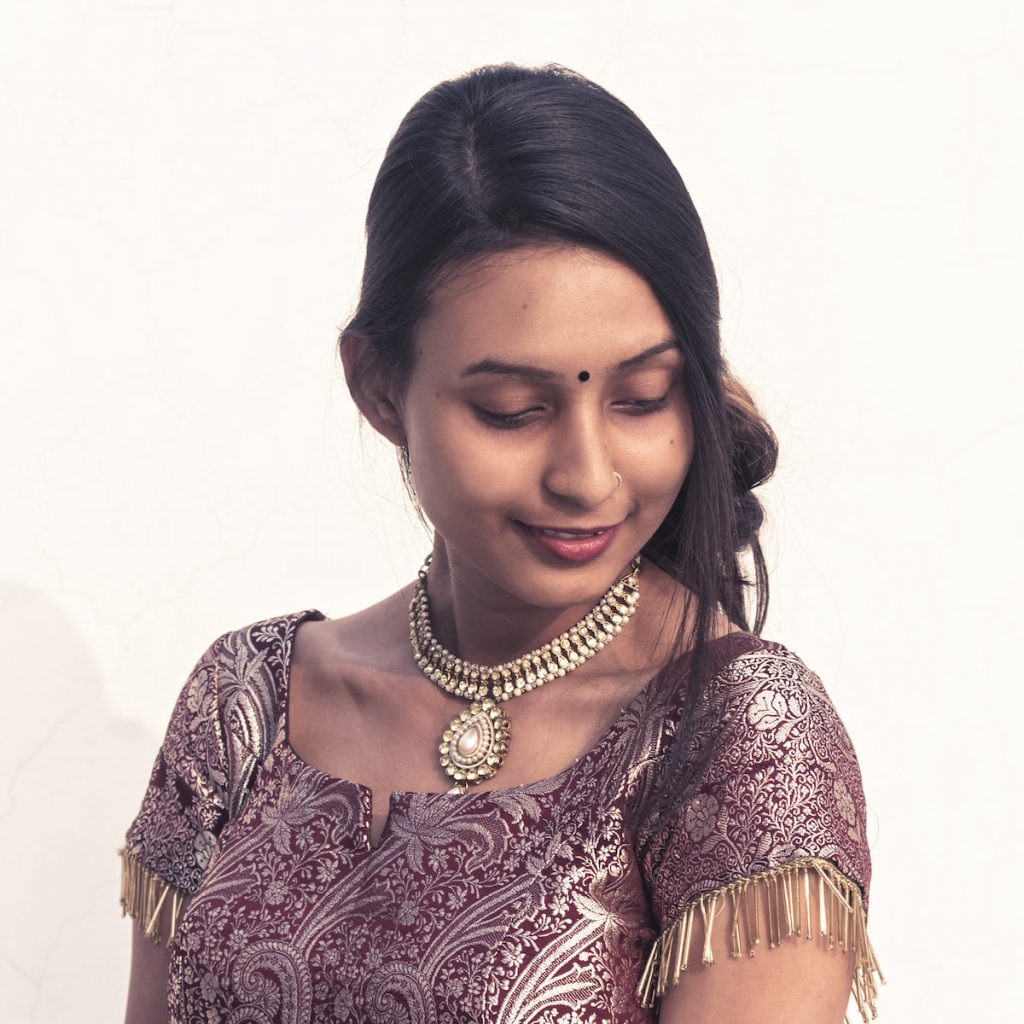
Kundan jewelry can be distinguished by its unique design of layers of stones and metals. Together, these layers are combined to create a sophisticated design with intricate details and joint work.
Each stone in the design is set in its own metal foil that enhances the overall look without making one stone seem less shiny than the others. The term ‘Kundan’ means ‘highly pure gold,’ and most Kundan jewelry is made of 24K pure gold. Today, some jewelry manufacturers produce artificial Kundan. They might have the same appearance, but no gold is used to hold the stones.
Depending on the design, it could take two to four months to produce one piece of Kundan jewelry.
Jali Jewellery
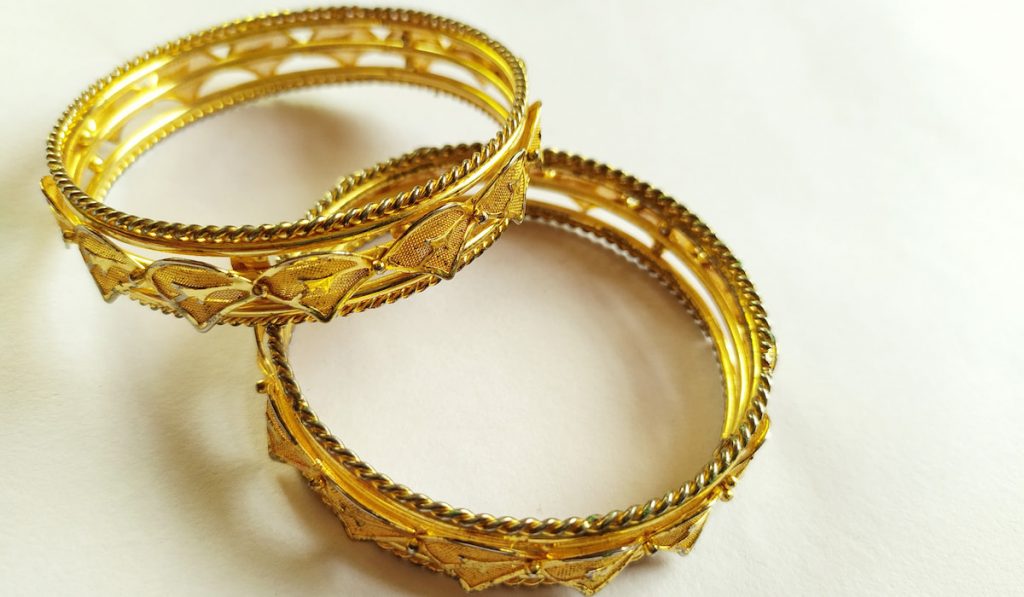
Jali jewelry is produced through metal mesh and lattice techniques. It aims to create intricate lattices that match with other unique designs such as floral, geometric, and calligraphic.
The word Jali is also related to the type of stone carvings mentioned in Indian architecture. For instance, Jali screens made from wood mark spaces in buildings or houses while increasing airflow and illumination. Unlike other jewelry, you can expect Jali jewelry to have more intricate metal designs with latticed patterns.
Other materials used to produce this jewelry are filigree, gold, silver, lac, and some wooden pieces.
Lac Jewellery
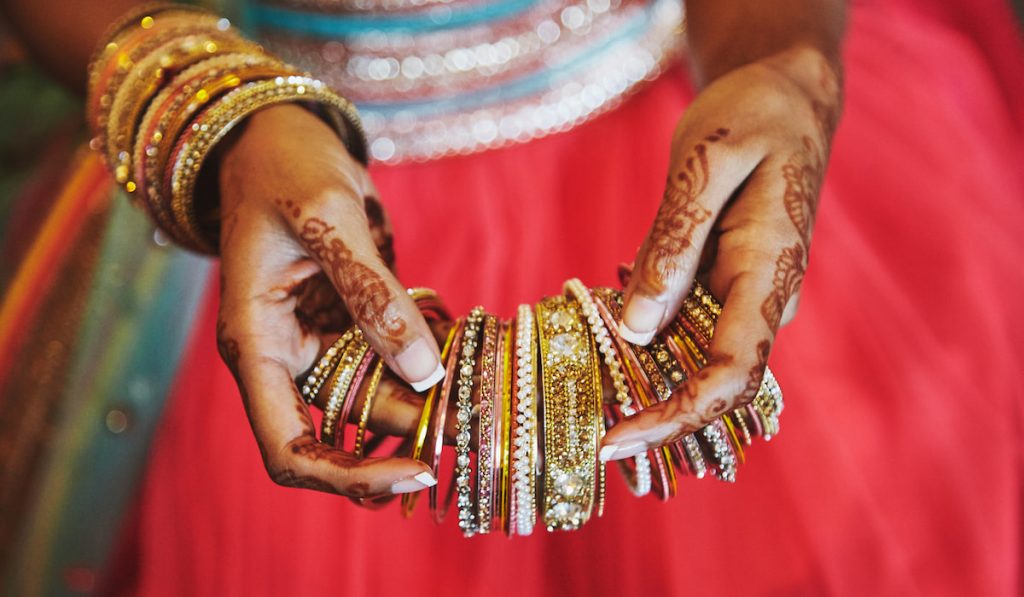
Also known as lacquer jewelry, this precious ornament originated in West Rajasthan, India. In fact, many royal families and women in Rajasthan wear one of the famous forms of lac jewelry, known as lac bangles or Rajasthani bangles.
The term Lac refers to the lacquer, which is this jewelry style. This partially solid, gummy material can be acquired from a female bug called Tachardia lacca. This bug can be found in the forests of India and Thailand.
There are three categories of lac jewellery with different colors that signify their qualities: light golden, brown, and black. The light golden jewelry is the most expensive of all.
Meenakari Jewellery

Jaipuran artisans first created meenakari jewelry through enameling. The word Meenakari comes from the combination of two words, Meena and Kari. Meena refers to paradise or heaven in the Persian language, and Kari means to place something onto other things. Combining these two words, Meenakari means to place paradise onto an object.
To produce Meenakari jewelry, each enamel of different colors in filled separately inside every part of the jewelry. Then, the jewellery will be heated to bond the enamel with the base metal. The piece is cooled before being repeated with other colors. Meenakari jewelry is a statement piece that gives off an easy-going, cheerful, and modern image with intricate details and unique designs.
Paambadam Jewellery
Paambadam is primarily worn by elderly women in Kerala and Tamil Nadu, India. This jewellery usually comes in the shape of snakes with two balls and knobs, a square and tongue piece, and a set of heavy earrings that weigh around 0.11 pounds.
The word “paambadam” in Tamil also refers to the hood of the snake. Due to being heavy, the earrings will stretch the earlobes of the women that wear them. Today, this jewelry isn’t as popular as it used to be.
Pachchikam Jewellery
Originated in Gujarat and Kutch, the designs and patterns of this jewelry were influenced by accessories worn by European nobles in the 16th century. It was also worn by Indian nobles before being passed to the next generation and assimilated into the Gujarati culture.
Pachchikim jewelry bears a rustic appearance and looks similar to Kundan jewelry. However, they are much cheaper and more affordable to be worn by most people. This jewelry is primarily made from silver, uncut glass, and precious stones.
Vadannam Jewellery
Vadannam jewelry can be categorized as the heaviest ornament worn by Indian women. This jewelry is a waist belt or waist chain worn on many occasions by most women of South India. At weddings, Vadannam symbolizes status symbols and appreciation toward the culture. In other regions, Vadannam is known by its other name including Oddiyanams in south India and Kamarbandh in the northern regions.
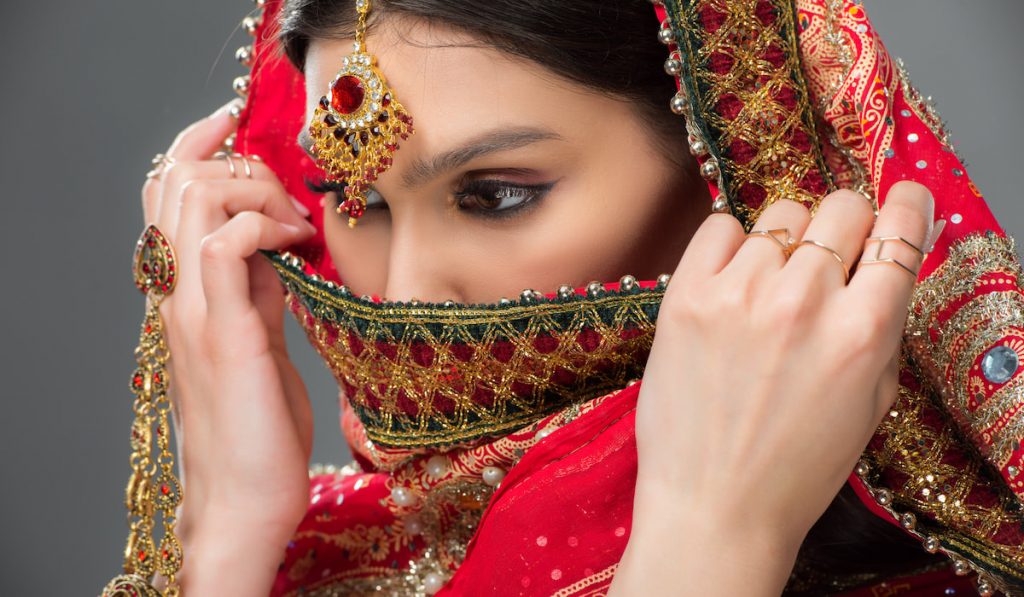
Final Thoughts
There is nothing wrong with keeping or purchasing Indian jewelry. However, if you’re not Indian, some would adore your enthusiasm, while others might view it as a cultural appropriation and a disrespectful action.
No matter the case, you can always wear it in your own time, provided that your outfit matches the jewelry. And if you’re attending any Indian event or a wedding ceremony, wearing this jewelry would be a bonus in the right situation. It can show how much you appreciate the culture and the uniqueness of Indian heritage.
Resources
- https://www.saaj.design/blogs/jewellery/traditional-indian-jewellery-of-indian-heritage-jewellery
- https://www.lillicoco.com/blogs/love-lillicoco-blog/jewellery-around-the-world-indian-jewellery
- https://theculturetrip.com/asia/india/articles/mughals-myth-and-murder-500-years-of-indian-jewelry/
- https://www.yoair.com/blog/history-and-cultural-significance-of-traditional-indian-jewellery/
- https://pristinefire.in/blogs/popular-interest/jewelry-in-indus-valley-civilization
- https://www.pruneindia.com/blogs/news/everything-you-need-to-know-about-the-history-of-indian-jewellery
- https://www.krishnapearls.com/blog/36-types-indian-jewellery/
- https://www.jewelryshoppingguide.com/types-of-indian-jewelry/

